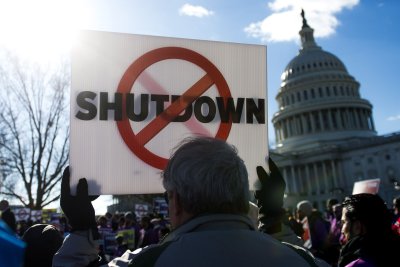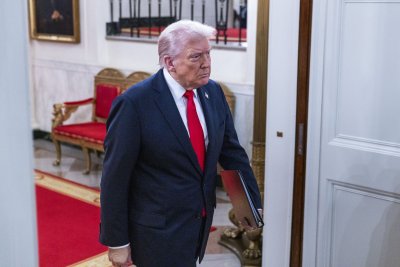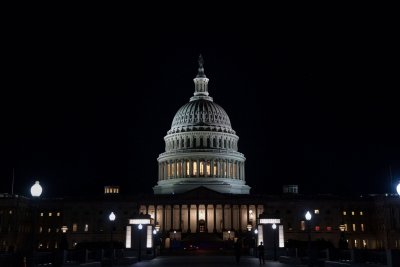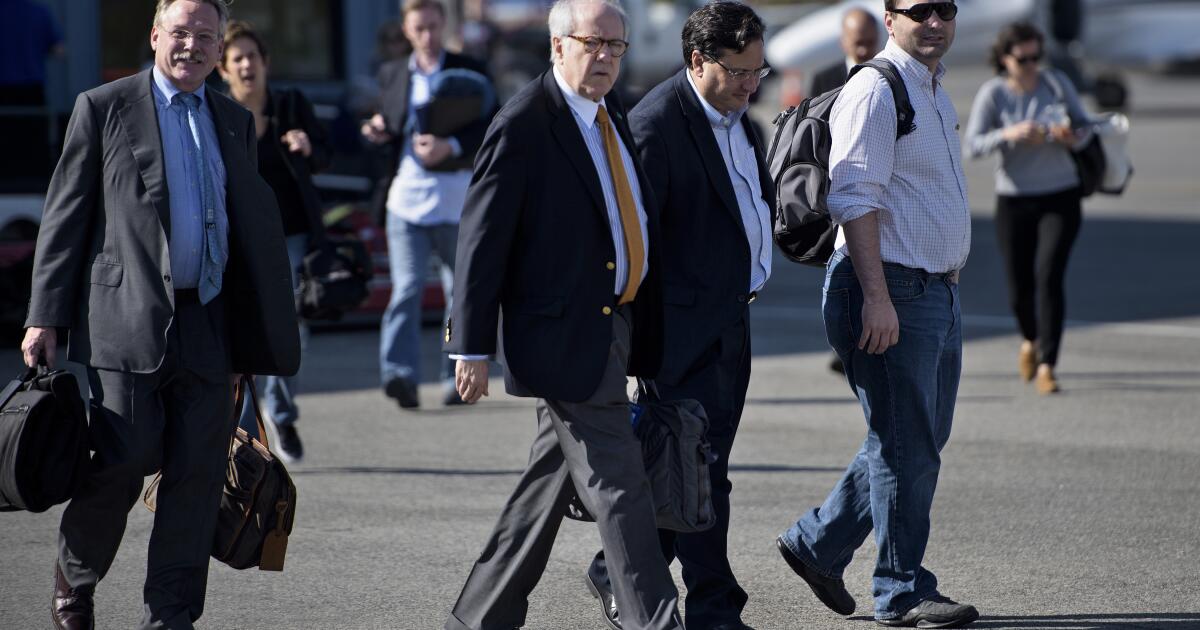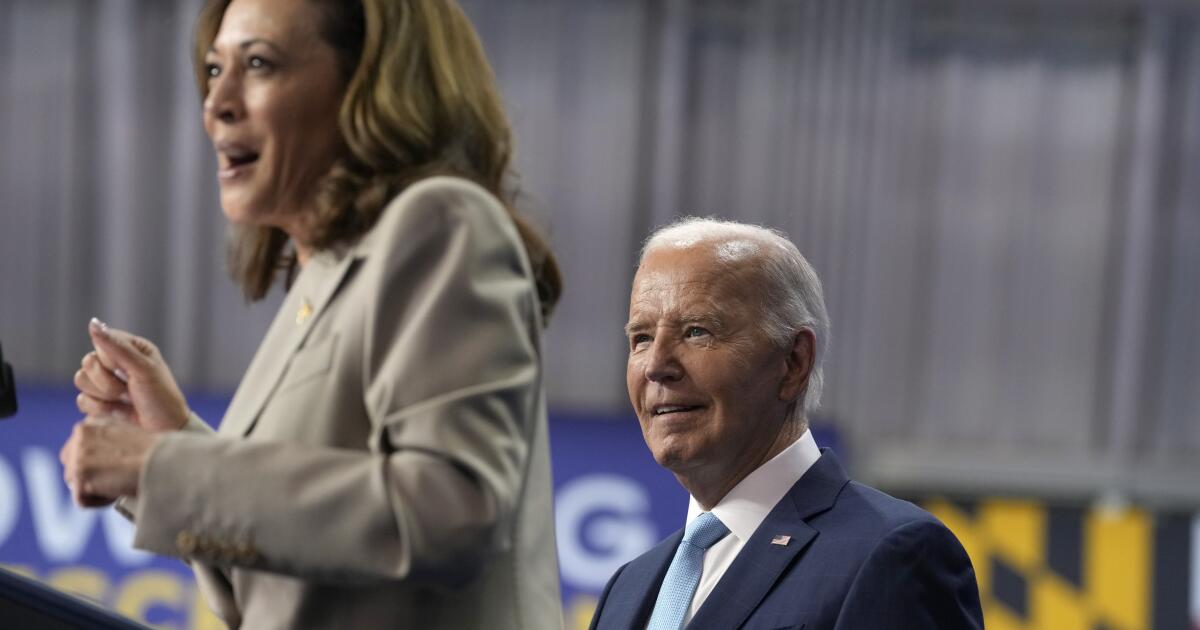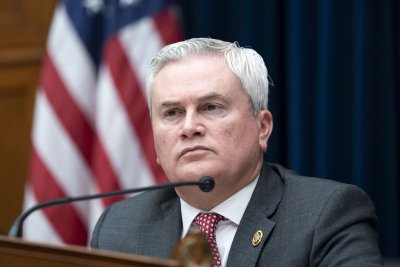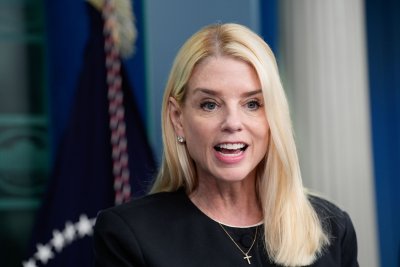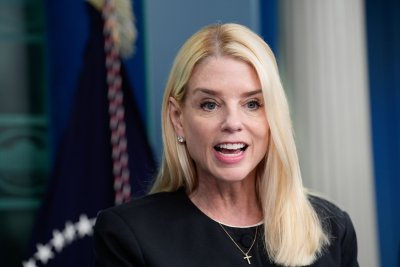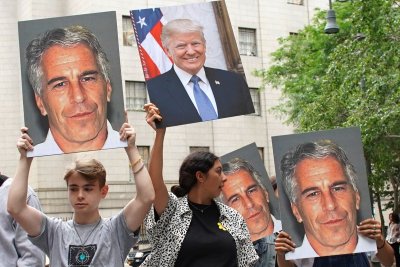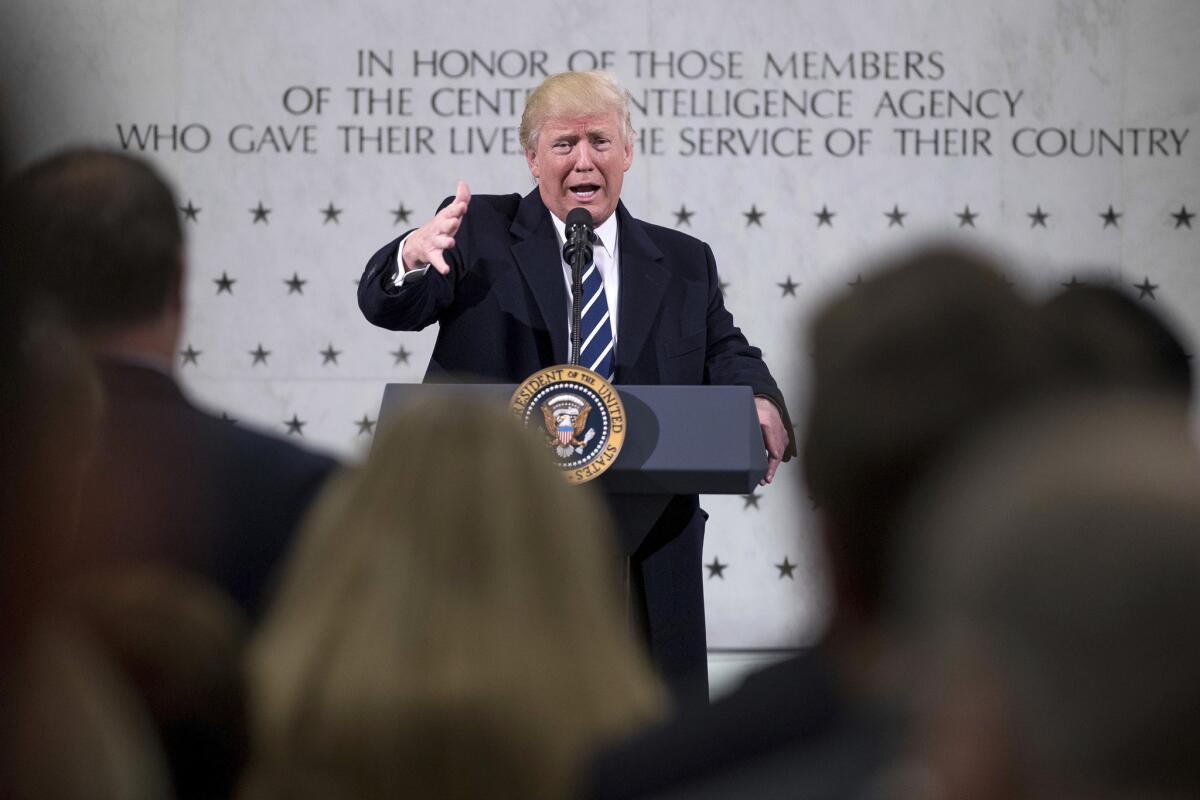June 11 (UPI) — The second night of curfew took place in downtown Los Angeles on Wednesday, as local law enforcement, backed by several thousand members of the National Guard, attempted to restrain violent protests and prevent vandalism.
Meanwhile, a group of protesters were in a standoff with law enforcement officers outside a federal courthouse in Santa Ana, about 32 miles south of Los Angeles, in Orange County. Military-style vehicles and National Guards troops blocked a portion of a street in front of the Ronald Reagan Federal Building and Courthouse and in front of a federal building a couple blocks away.
And protests also are occurring in other major U.S. cities,, including New York, Chicago and Washington, D.C.
The downtown Los Angeles curfew will remain in effect between 8 a.m. and 6 a.m., according to the Los Angeles Police Department’s Central Division. Ramps onto and off the 101 freeway also will continue to be closed, police said.
The curfew zone covers about 1 square mile and affects about 100,000 of Los Angeles’ 10 million residents.
Limited exceptions include law enforcement, emergency and medical personnel, residents, people traveling to and from work and credentialed news media representatives.
The White House confirmed Wednesday that 330 people were taken into custody by federal authorities since immigration sweeps by U.S. Immigration and Customs Enforcement began last week in Los Angeles.
Mayor Karen Bass said the number of people arrested from Tuesday night to Wednesday morning was “minor.”
About 225 were made, including 203 for failure to disperse. One person was arrested after an assault of a police officer with a weapon.
“If there are raids that continue, if there are soldiers marching up and down our street, I would imagine that the curfew will continue,” the mayor said.
During a news conference, Bass said she is trying to set up a call with President Donald Trump for him “to understand the significance of what is happening here.”
Court case
The Trump administration is asking a federal judge to reject California’s emergency court order request to limit how federal officials can use Marines and members of the state’s National Guard in and around Los Angeles.
The Guardsmen “are not performing law enforcement or any other functions,” Army Maj. General Niave F. Knell said in a declaration submitted to federal court Wednesday.
Justice Department lawyers responded to San Francisco-based U.S. District Judge Charles Breyer on Wednesday seeking briefs.
The 32-page filing notes that it is entirely within Trump’s authority as commander-in-chief, and is not reviewable by the court.
Federal law generally bars the military from enforcing domestic laws, but Trump invoked a provision to protect federal property and personnel when there is a “rebellion” or “danger of rebellion.”
The brief suggests that Gov. Gavin Newsom broke the law by failing to pass on Trump’s order to activate the guard. They said he might be “unwilling” to put a stop to the violence.
The judge, who was appointed by President Bill Clinton, initially rejected an immediate order and has scheduled a hearing for Thursday.
“The federal government is now turning the military against American citizens,” Newsom said in a news release Tuesday announcing the lawsuit. “Sending trained warfighters onto the streets is unprecedented and threatens the very core of our democracy.
“Donald Trump is behaving like a tyrant, not a President. We ask the court to immediately block these unlawful actions.”
The attempted order was filed as part of the governor’s lawsuit against Trump, Hegseth and the Department of Defense, “charging violations of the U.S. Constitution and the President’s Title 10 authority, not only because the takeover occurred without the consent or input of the Governor, as federal law requires, but also because it was unwarranted.”
According to the lawsuit: “ICE officers took actions that inflamed tensions — including the arrest and detainment of children, community advocates, and people without criminal history — and conducted military-style operations that sparked panic in the community.”
Community members then began protesting to express opposition to “these violent tactics, arrests of innocent people, and the President’s heavy-handed immigration agenda.”
Protests continued for two more days, “and although some violent and illegal incidents were reported — leading to justified arrests by state and local authorities — these protests were largely nonviolent and involved citizens exercising their First Amendment right to protest. The protests did not necessitate federal intervention, and local and state law enforcement have been able to control of the situation, as in other recent instances of unrest.
Federal response
Approximately 2,000 Guardsmen from the 79th Infantry Brigade Combat Team are helping protect ICE Officers, Customs and Border Protection Officers and FBI Special Agents. Another 2,000 have been called up.
Army Maj. Gen. Scott M. Sherman, who is overseeing the National Guard, said about 500 of the National Guard troops have been trained to accompany agents on immigration operations.
National Guard troops have temporarily detained civilians in the Los Angeles protests, but they quickly were turned them over to law enforcement, Sherman said.
Attorney General Pam Bondi said the administration “is not scared to go further” in expanding its legal authority to deploy troops in the city.
Defense Secretary Pete Hegseth also has deployed 700 Marines near Los Angeles. Sherman said the Marines are still training outside Los Angeles.
“Marines get a two-day set training for civil unrest, very extensive. It’s all about civil disturbance and how to control crowds and protection of facilities,” Sherman said during a news briefing Wednesday.
Hegseth told senators at a hearing Wednesday that Trump’s order to federalize the National Guard in California could be applied in other states.
“Thankfully, in most of those states, you’d have a governor that recognizes the need for it, supports it and mobilizes it, him or herself,” he said. “In California, unfortunately, the governor wants to play politics with it.”
Trump said in an interview with the New York Post’s Pod Force One, said: “I’m able to do things now that I wouldn’t have been able to do because the previous president and presidency was so bad that anybody looks good.
“As an example, I can be stronger on an attack on Los Angeles,” Trump said. “I think bringing in the National Guard four years ago, or eight years ago, would have been more difficult.”
Newsom on Wednesday said: “President Trump has unnecessarily redirected 4,800 activated guards and Marines to Los Angeles – that’s more soldiers than are currently stationed in Iraq and Syria combined.”
Situation on the streets
Los Angeles County Sheriff Robert Luna said his agency is investigating whether there’s “conspiracy” or organization behind crimes committed during protests.
“There is some evidence we’ve seen that I don’t want to share at this time,” Luna said at a Wednesday news conference with Los Angeles County District Attorney Nathan Hochman.
He said authorities are focused on arresting individuals in causing unrest at the protests.
Hochman said his office will review additional criminal cases brought by law enforcement in addition to the five he announced Wednesday.
Two people were charged with assault on a peace officer after they allegedly drove motorcycles into a line of officers. One officer was hurt and several others were knocked down, Hochman said.
“For any individual who is engaged in criminal conduct but did not get immediately arrested, let me provide some bad news for you,” Hochman warned. “There is a tremendous amount of video out there through social media, and otherwise. We will know who you are, who engaged in this conduct. We will track you down, we will arrest you, we will prosecute you, and we will punish you. So for people who’ve already engaged in this, in this illegal activity, we’re coming for you.”
Leticia Rhi Buckley, who lives and works just under a mile from the Los Angeles Federal Building, told CNN that the Trump administration’s narrative that Los Angeles is under siege is false. She said the vast majority of what she’s witnessed has been peaceful.
“I live less than a mile from here. I drive home and about five blocks down, there’s nothing. It’s like nothing is happening,” she said. “Living in downtown for 15 years, it’s gotten louder when the Dodgers won the World Series, or when the Lakers won.”
Bass, the Los Angeles mayor, said “the portrayal is that all of our cities are in chaos. Rioting is happening everywhere, and it is a lie,” she said, adding it is not an insurrection as Trump suggests.
“Given that I was there on January 6th and saw that insurrection take place, the idea that this, what is happening here is an insurrection is just false and I think it is deliberately false,” Bass, appearing with 30 other mayors in the region, said. “I don’t think they’re confused.”
Bill Essayli, the U.S. attorney for the Central District of California, said authorities are collecting video, photos and body camera footage to identify anyone who committed acts of violence.
ICE agents conducted raids Wednesday morning in Downey, Calif., Councilman Mario Trijulli said. The city of more than 110,000 people located south of Los Angeles.
Fearful immigrants
Nannies are worried they could be profiled and detained by ICE agents while working, one of them told CNN.
“I’m a citizen of the United States, but my color, my skin color, makes me wonder…will they see me different?” Elsy Melara said. “I’m honestly not afraid to the point myself, but I’m afraid that if they don’t believe me, or if they choose not to believe me, what would happen to the kid?”
She said she knows two nannies are in ICE detention after they were handcuffed in a public park.
LA’s garment industry is on edge.
Federal agents were seen going into the manufacturer Ambience Apparel in Downtown Los Angeles on Monday.
“We’re hearing from our membership about a lot of fear and stress. People’s mental health is really being impacted,” Bo Metz, founder of LA-based manufacturer Bomme Studio, told Vogue Business. “People are afraid to leave their homes. Some people are opting to not go to work and others have no choice. We also need to continue to put food on the table and keep a roof over our heads. Workers are really feeling that pressure right now.”
More than one-third of the more than 300,000 workers producing clothing and shoes in the U.S. are immigrants, according to an analysis by Fwd.us, an immigration reform organization. That includes an estimated 30,000 undocumented.


